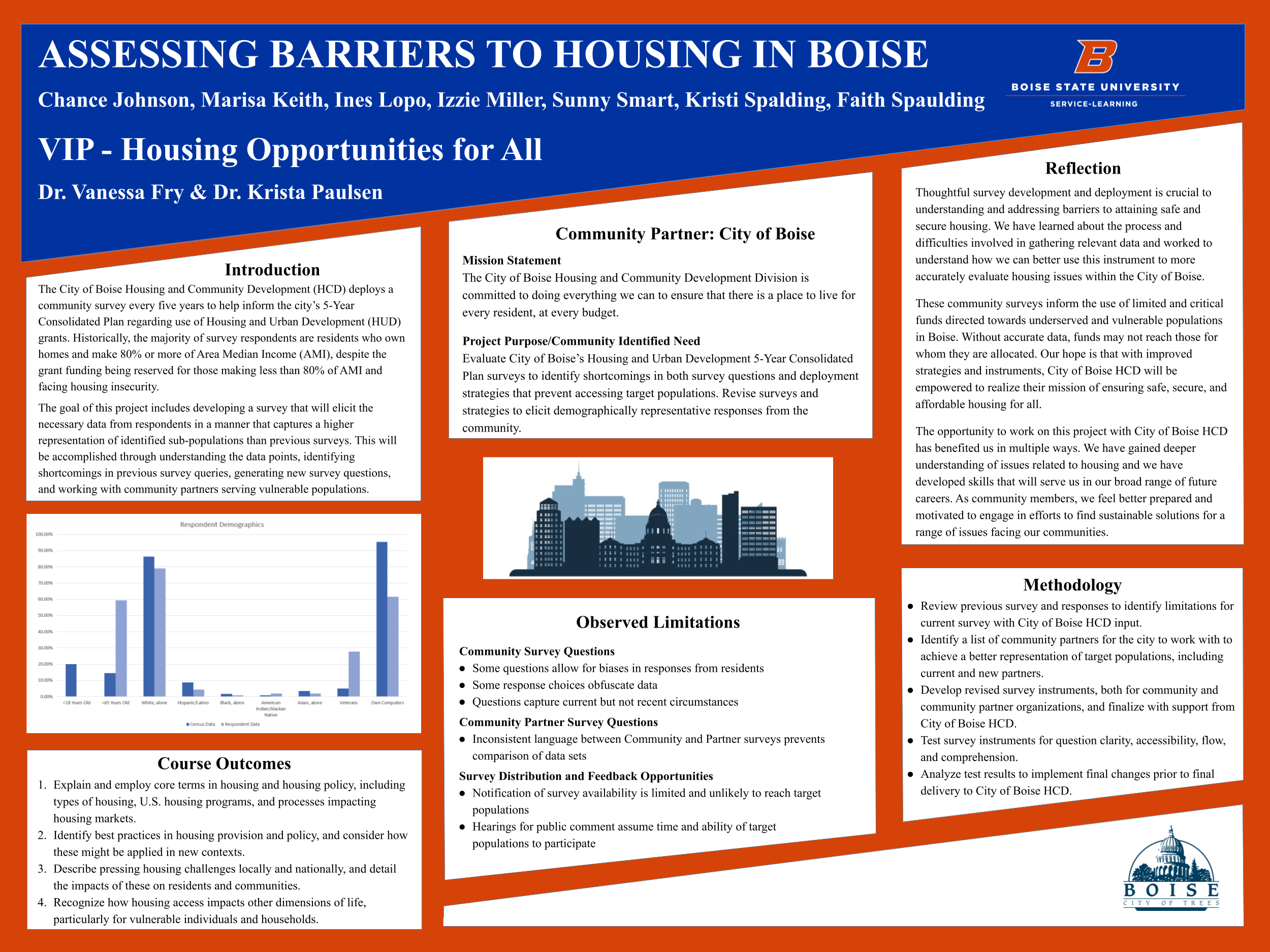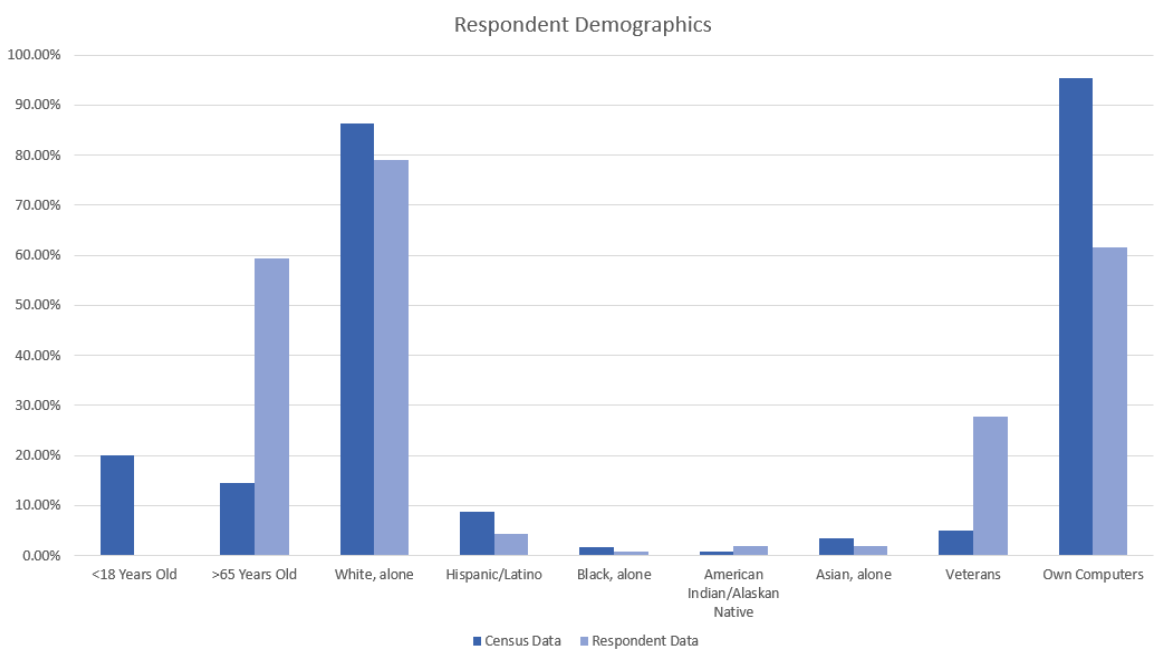Chance Johnson, Marisa Keith, Ines Lopo, Izzie Miller, Sunny Smart, Kristi Spalding, Faith Spaulding
Dr. Vanessa Fry & Dr. Krista Paulsen – VIP 200,VIP400, VIP 500
City of Boise

Introduction
Learning Goals:
The City of Boise Housing and Community Development (HCD) deploys a community survey every five years to help inform the city’s 5-Year Consolidated Plan regarding use of Housing and Urban Development (HUD) grants. Historically, the majority of survey respondents are residents who own homes and make 80% or more of Area Median Income (AMI), despite the grant funding being reserved for those making less than 80% of AMI and facing housing insecurity.
The goal of this project includes developing a survey that will elicit the necessary data from respondents in a manner that captures a higher representation of identified sub-populations than previous surveys. This will be accomplished through understanding the data points, identifying shortcomings in previous survey queries, generating new survey questions, and working with community partners serving vulnerable populations.
Reflection
Thoughtful survey development and deployment is crucial to understanding and addressing barriers to attaining safe and secure housing. We have learned about the process and difficulties involved in gathering relevant data and worked to understand how we can better use this instrument to more accurately evaluate housing issues within the City of Boise.
These community surveys inform the use of limited and critical funds directed towards underserved and vulnerable populations in Boise. Without accurate data, funds may not reach those for whom they are allocated. Our hope is that with improved strategies and instruments, City of Boise HCD will be empowered to realize their mission of ensuring safe, secure, and affordable housing for all.
The opportunity to work on this project with City of Boise HCD has benefited us in multiple ways. We have gained deeper understanding of issues related to housing and we have developed skills that will serve us in our broad range of future careers. As community members, we feel better prepared and motivated to engage in efforts to find sustainable solutions for a range of issues facing our communities.
Community Partner: City of Boise
Mission Statement:
The City of Boise Housing and Community Development Division is committed to doing everything we can to ensure that there is a place to live for every resident, at every budget
Project Purpose/Community Identified Need:

Evaluate City of Boise’s Housing and Urban Development 5-Year Consolidated Plan surveys to identify shortcomings in both survey questions and deployment strategies that prevent accessing target populations. Revise surveys and strategies to elicit demographically representative responses from the community.
Course Concepts
- Explain and employ core terms in housing and housing policy, including types of housing, U.S. housing programs, and processes impacting housing markets.
- Identify best practices in housing provision and policy, and consider how these might be applied in new contexts.
- Describe pressing housing challenges locally and nationally, and detail the impacts of these on residents and communities.
- Recognize how housing access impacts other dimensions of life, particularly for vulnerable individuals and households.
Methods
- Review previous survey and responses to identify limitations for current survey with City of Boise HCD input.
- Identify a list of community partners for the city to work with to achieve a better representation of target populations, including current and new partners.
- Develop revised survey instruments, both for community and community partner organizations, and finalize with support from City of Boise HCD.
- Test survey instruments for question clarity, accessibility, flow, and comprehension.
- Analyze test results to implement final changes prior to final delivery to City of Boise HCD.
Results
Observed Limitations
- Community Survey Questions – Some questions allow for biases in responses from residents; Some response choices obfuscate data, Questions capture current but not recent circumstances
- Community Partner Survey Questions – Inconsistent language between Community and Partner surveys prevents comparison of data sets
- Survey Distribution and Feedback Opportunities – Notification of survey availability is limited and unlikely to reach target populations; Hearings for public comment assume time and ability of target populations to participate